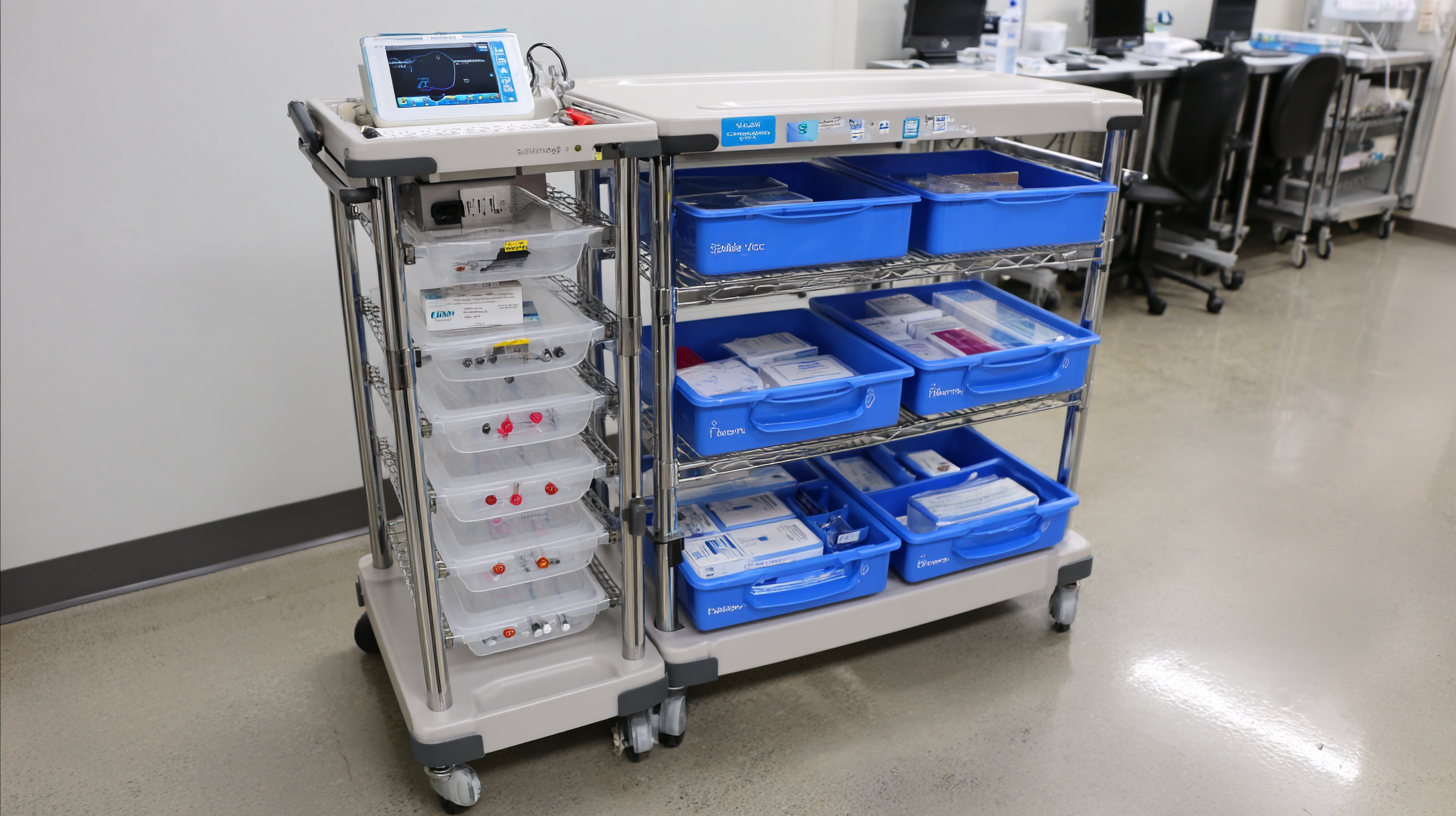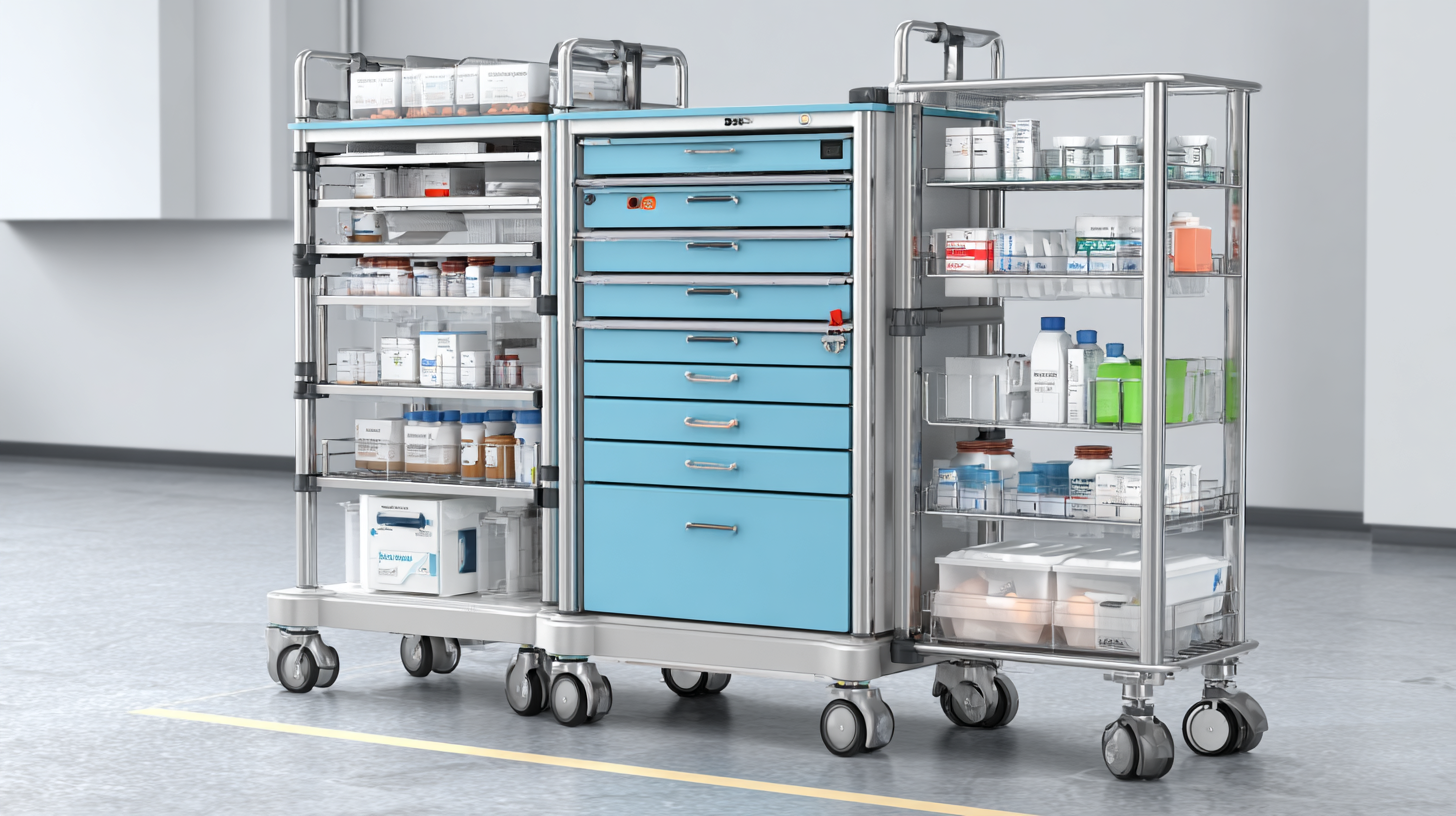Future Trends in Best Medication Carts Market Analysis 2025 with Key Data and Practical Insights
As the global healthcare landscape continues to evolve, the medication carts market is set to undergo significant transformations by 2025. This essential component of hospital infrastructure has grown increasingly vital, with a projected market size anticipated to reach USD 1.2 billion, reflecting a compound annual growth rate (CAGR) of 10% from 2020 to 2025, according to recent industry reports. The rise in patient-centric care models, coupled with advancements in healthcare technology and the demand for improved medication management, underscores the importance of innovative medication carts. Notably, China's manufacturing prowess has positioned it as a key player in the global supply chain, exporting high-quality medication carts to meet the diverse needs of healthcare facilities around the world. This blog will explore the future trends influencing the medication carts market, drawing on key data and practical insights to navigate the implications for healthcare providers and manufacturers alike.

Future Projections for the Global Medication Carts Market Through 2025
As we approach 2025, the global medication carts market is poised for significant transformation, driven by technological advancements and evolving healthcare needs. According to a recent report by Market Research Future, the medication carts market is projected to grow at a compound annual growth rate (CAGR) of approximately 8.5% during the forecast period. This growth is attributed to the increasing adoption of electronic health records and automation in healthcare facilities, which enhances efficiency and accuracy in medication administration.
Moreover, the demand for user-friendly and customizable medication carts is on the rise. A survey conducted by Grand View Research indicates that hospitals are prioritizing features such as security, mobility, and ergonomic design in their purchasing decisions. As healthcare providers seek to improve patient safety and streamline operations, the shift towards integrated solutions that combine medication carts with advanced tracking technology is likely to define the market landscape through 2025. With these trends, stakeholders in the healthcare industry must adapt to meet the changing dynamics of medication management.
Future Trends in Best Medication Carts Market Analysis 2025
The following bar chart illustrates the projected growth in the global medication carts market from 2023 to 2025. The market is expected to grow due to increasing healthcare demands and advancements in medication management systems.
Key Factors Driving Demand in the Best Medication Carts Sector
The demand for medication carts is expected to witness significant growth in the coming years, driven by several key factors. According to a recent market analysis, the global medication cart market is projected to reach approximately $500 million by 2025, showcasing a compound annual growth rate (CAGR) of 7% from 2021 to 2025. This surge is primarily attributed to the increasing need for efficiency and safety in healthcare environments, particularly within hospitals and long-term care facilities.
One of the primary drivers of demand is the rising emphasis on patient safety and error reduction in medication administration. The integration of advanced technology in medication carts, such as electronic locking systems and automated dispensing features, enhances the accuracy of medication delivery. A market report from Grand View Research highlights that the adoption of RFID technology stands out as a transformative trend, enabling real-time tracking of medication and reducing the likelihood of theft or misplacement. Furthermore, the ongoing changes in healthcare regulations continue to propel the investment in updated and compliant medication delivery systems, reinforcing the medication cart market's growth trajectory.
Regional Analysis: The Global Landscape for Medication Cart Manufacturing
The medication carts market is witnessing significant transformations due to advancements in technology and growing healthcare demands. As hospitals and clinics look to improve efficiency and safety in medication management, the manufacturing landscape is evolving. Regional analysis reveals a diverse global footprint, with varying demands influenced by healthcare infrastructure, regulatory standards, and technological adoption rates. Regions with robust healthcare investments are seeing a surge in innovative medication cart solutions designed to enhance patient safety and streamline workflows.

In parallel, the Internet of Medical Things (IoMT) is positioning itself as a game-changer within the broader medical equipment sector. As highlighted by recent research, the market for IoMT is expected to reach USD 1,061.49 billion by 2034, growing at an impressive CAGR of 16.1%. This rapid growth reflects an increasing integration of smart technologies in medical devices, including medication carts. The intersection of IoMT and medication management underscores the need for efficient, connected systems that not only improve patient care but also provide actionable insights for healthcare providers, influencing purchasing decisions across various regions.
Innovations in Design and Technology for Enhanced Medication Carts
As the healthcare industry strives for greater efficiency and safety, innovations in design and technology for medication carts are transforming how medications are managed in clinical settings. The global medication carts market is projected to grow at a compound annual growth rate (CAGR) of 5.8% between 2020 and 2025, reaching approximately $650 million by the end of this period. This growth is fueled by the increasing need for more efficient medication delivery systems, driven largely by the rising patient population and stricter regulatory standards for medication administration.
Recent advancements include smart medication carts equipped with automated dispensing systems. These carts integrate RFID technology to track medication inventory in real-time, reducing the chances of errors and improving overall workflow efficiency. According to a report by MarketsandMarkets, around 30% of hospitals are expected to adopt such technology by 2025, significantly enhancing staff productivity and patient safety. Additionally, ergonomic designs and lightweight materials are being prioritized to enhance maneuverability and reduce strain on healthcare providers, directly addressing the needs of modern hospital environments. The focus on user-friendly features in medication cart design is anticipated to set new benchmarks for performance and functionality within the industry.
Future Trends in Best Medication Carts Market Analysis 2025
| Dimension | 2023 Data | 2024 Forecast | 2025 Forecast |
|---|---|---|---|
| Market Size (Million USD) | 500 | 600 | 700 |
| Market Growth Rate (%) | 5% | 6% | 7% |
| Key Innovations | Basic Designs | Smart Technology Integration | AI and Automation Features |
| User Satisfaction Rate (%) | 75% | 80% | 85% |
| Regions with Highest Demand | North America | Europe | Asia-Pacific |
Sustainability Trends Shaping the Future of Medication Cart Production in China
As the medication carts market in China evolves, sustainability trends are playing an increasingly crucial role in shaping production processes. With a global emphasis on reducing environmental impact, manufacturers are pivoting towards designs that prioritize durability, reuse, and remanufacturing. According to industry reports, the demand for eco-friendly solutions is accelerating, with research indicating that sustainable product design can potentially reduce lifecycle costs by up to 30%. This shift not only aligns with the growing consumer preference for green products but also positions companies to comply with stricter regulatory standards emerging in various countries.

Moreover, China's commitment to innovation extends to its approach in manufacturing health-related products. As the nation rapidly advances in technologies, local companies are adopting smart manufacturing systems that integrate sustainability into the core of their operations. Reports suggest that the global wellness market is projected to reach $1.8 trillion by 2024, prompting a surge in demand for high-quality, sustainable medical equipment. In this context, medication carts produced in China are increasingly viewed not just as functional items, but as integral components of an eco-conscious healthcare system, aligning with broader trends towards smart cities and sustainable logistics.
